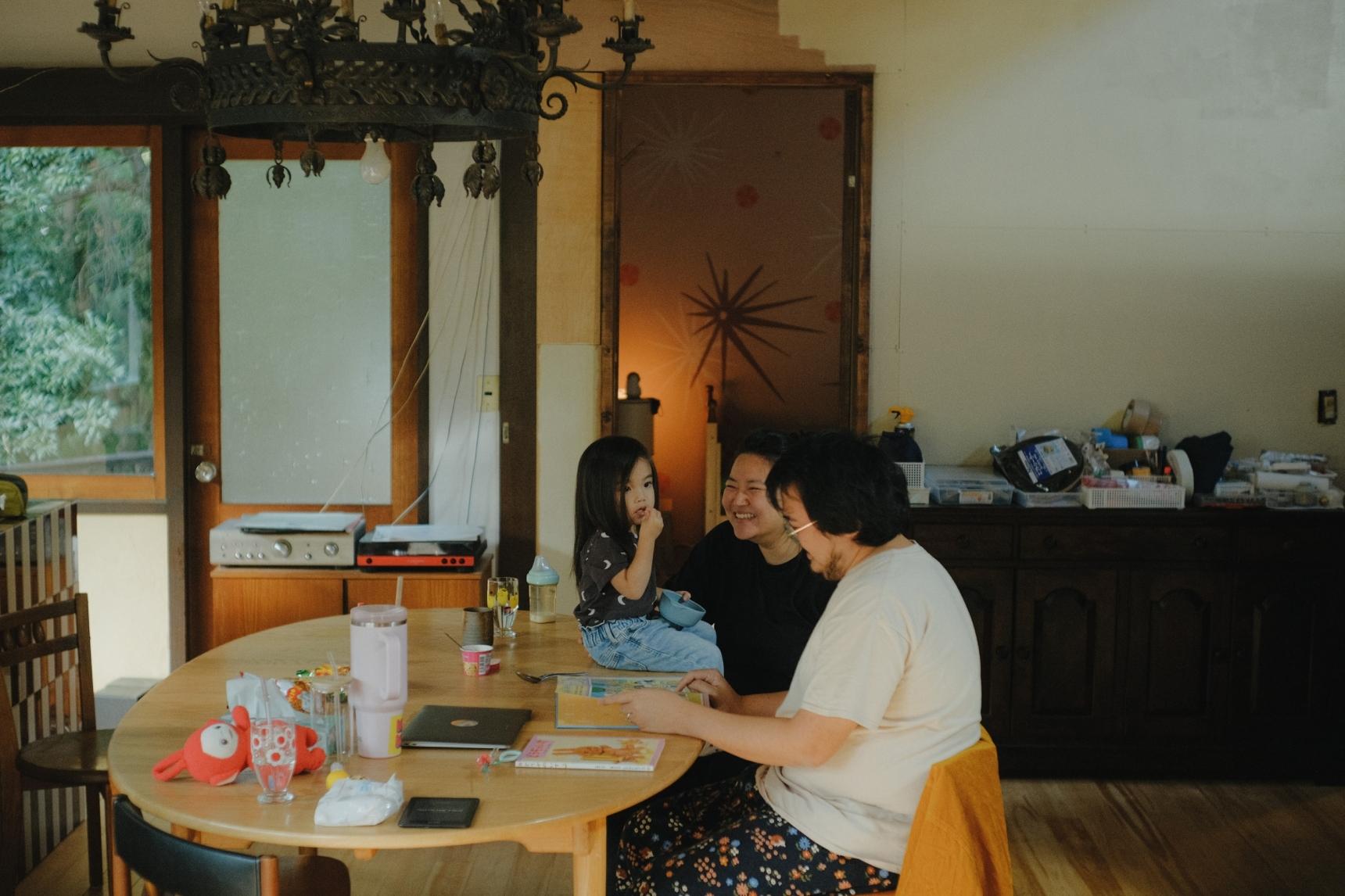By Sarah Stanley for The Straits Times
Copyright tnp

Singaporean couple Sean Gwee and Ashley Hong, both 34, liken the suburb in Japan’s Okayama, where they bought a three-storey house in 2023, to Singapore’s Toa Payoh neighbourhood.
“Like Toa Payoh, we’re around 20 minutes outside of town and have amenities like supermarkets, restaurants and convenience stores nearby,” says Ms Hong, a freelance television producer who grew up in Singapore’s second satellite town.
“It’s also an older suburb and, while it may not be as lively as the main town area, the location is perfect for us.”
Since moving to Japan in September 2023, the couple have had more than 40 friends, acquaintances and strangers stay over – sometimes opening their home to travellers when they are away.
No one, whether he or she stays days or weeks, has to pay a cent. It is a matter of principle for the couple, who want guests to feel welcome and enjoy what Okayama has to offer.
Unlike major cities in Japan such as Tokyo, Osaka and Kyoto, Okayama is an unhurried haven – a place the couple set their hearts on after visiting a friend there in 2018. They got married in 2019 and have a three-year-old daughter, Luna.
Situated in western Japan, Okayama is the capital city of its namesake prefecture and home to more than 710,000 people. It can be reached with a flight to Okayama Momotaro Airport or via a 45-minute ride on the shinkansen high-speed train from Osaka.
Traditionally an agricultural hub, the prefecture produces cash crops such as rice, barley, grapes, peaches and cotton. That legacy endures today, with much of its land still devoted to farming and homes nestled amid nature.
Mr Gwee, an architectural designer, has long dreamed of living – quite specifically – in a forest.
“A lot of it has to do with how I function as an architectural designer and needing more space to do the kind of work I want to do, like building conceptual and experimental projects surrounded by nature,” he says.
Ms Hong adds: “It’s been a long time coming. After all those years of wanting to move, we finally decided to get serious about looking for a house abroad in 2023.”
The draw of Okayama
Japan ticked many boxes for the couple. They saw it as a safe and nurturing environment to raise their daughter, and where Mr Gwee would have ample space for his projects.
Beyond that, it was a destination they loved visiting, having been drawn to its food, culture and landscapes. With the favourable exchange rate, settling in Japan became more attainable.
When they started looking at properties in Japan in March 2023, they worked off an estimated budget of $50,000 and a shortlist of 10 homes. They whittled the options down to three before landing on their current place in June 2023.
“Our first thought when we saw the online listing was that it was unlike many other old Japanese houses that typically had timber construction and multiple tatami rooms,” Ms Hong says.
“This place had concrete columns everywhere, so we didn’t need to worry as much about structural issues. We knew at first glance that it would be liveable.”
Although the freehold property built in the late 1950s stretched their budget to $89,000, they were glad to make the purchase, knowing they would save on renovation costs.
According to Global Property Guide, an online real estate resource, Japan does not impose legal restrictions on foreign ownership. This means foreigners can own freehold land with taxes amounting to around 7.4 to 8.4 per cent of the total transaction cost.
In September 2023, they moved into the 150 sq m house, which sits in the middle of a 2,000 sq m plot of land. Much of what surrounds the house is wilderness in the form of persimmon trees, bayberry shrubs and other coniferous plants – an environment that, in a way, realises Mr Gwee’s dream of living in a forest.
The house came with red carpeted floors, matching dull red curtains, a gilded wrought-iron chandelier, a bar and other dated decor. The couple later found out that it used to be a holiday home for the president of a Japanese company in the 1970s, and was mostly used for entertaining.
Ms Hong named their new home Isle of Dreams, inspired by two of her favourite movies: American film-maker Wes Anderson’s animation film Isle Of Dogs (2018) and a Japanese documentary called The Kingdom Of Dreams And Madness (2013).
She says: “I definitely romanticised our move, and I wanted to give it a name to mark a new chapter – and a completely different experience – in our lives.”
Hosting the world
Mr Gwee and Ms Hong enjoy hosting. When they bought the house, Ms Hong posted an open invite on Instagram, asking if anyone wanted to visit while they carried out renovations. Many of their friends in Singapore responded – excited to see a different side of Japan – and spent an average of two weeks in Okayama with them.
In lieu of payment, guests then and now help with chores and pitch in for renovation works such as painting and building furniture. The three-storey house can comfortably sleep nine.
“We know sometimes people feel obligated to do something in return because we don’t charge them for stays. While it’s nice if they can help with chores, there’s no real need to,” says Ms Hong.
“Some people reached out to us because they were stressed at work and needed a place to recharge. If they need to take a breather, that’s what our place will provide. We don’t want people to feel guilty about staying for free.”
Ms Hong logs updates about their new life on an Instagram account (@isleofdreams.space) she created in August 2023. It is through the social media platform that a few people they had either not spoken to in years or never met before reached out about possible stays.
The couple say in those situations, they try to meet potential guests first over a virtual or in-person meeting, so they can better explain how the stay might go. It doubles as a screening opportunity, although they have not rejected anyone so far.
“We have to let them know that we have a kid and she has her own rhythm. So, she might wake in the night and we might not be able to accommodate them so much – stuff like that,” says Ms Hong.
For now, the couple shuttle between Japan and Singapore, typically living in their Japan home from October to January and April to July. In between, they return to Singapore and stay in Mr Gwee’s family home. The couple do not own property in Singapore.
Even when they are not at home in Okayama, the house is rarely empty.
A Japanese neighbour often drops by to check on the house, sometimes using the living room as a makeshift office. Two friends who have stayed twice now hold keys, giving them access whenever they like.
Asked if they worry about things going missing with such open arrangements, the couple say they trust their guests.
“We don’t really have anything valuable in the house. The thing we care about most is the house itself,” says Mr Gwee.
A work-in-progress
Having lived in Okayama for almost two years, the couple have found their rhythm.
While they have not yet mastered Japanese, they are now able to better recognise common words and phrases at places such as the local supermarket and train station. Still, they rely on Google Translate to understand Japanese writing and conversations 70 per cent of the time.
They have also built a small local community of neighbours and fellow parents from Luna’s pre-school, and with a long-term rental car, they can now navigate their suburb with ease.
In July, they hosted a three-day event at their house in celebration of Tanabata festival, also known as star festival.
Tanabata is based on a Chinese legend of two star-crossed lovers who reunite on the seventh day of the seventh month each year. Its festivities celebrate reunion, love and hope.
“In our attempt to get to know our community better, we held a mini market-like thing in our house. We had crafts and ceramics activities, and food and drinks,” says Ms Hong.
Friends travelled in from other parts of Japan to help. They included Ms Stacy Tan, a Singaporean who runs an independent textile studio in Tokyo and Singapore, who hosted a small embroidery station during the event. Over the three days, the event drew 81 guests – many of them children, who enjoyed running around in their backyard.
Looking ahead, the couple’s plans remain flexible. With Luna due to start primary school in Singapore in three years, the Okayama house may eventually become a holiday home for family trips during the June and December breaks.
In the meantime, the property is a work-in-progress. They have been installing new windows, repainting walls and, most recently, building a pottery studio on the ground floor and a gazebo in the backyard.
Ms Hong advises travellers that Okayama is not big and showy like major cities with numerous tourist attractions, but is closer to what she describes as “a slice of life”.
She lists waiting for laundry to be done on the steps of their local laundromat with convenience store-bought rice balls in hand, and driving along a bridge in the city at sunset as some of her favourite things to do in the neighbourhood.
For Mr Gwee, simplicity is the whole point. “We knew we wanted to live in Japan and intentionally steered away from touristy locations because we’re not there on holiday,” he says. “We’re living our lives.”
Red Dot Abroad is a series on Singaporeans hosting the world, one stay at a time. For more travel stories, go to str.sg/travel



